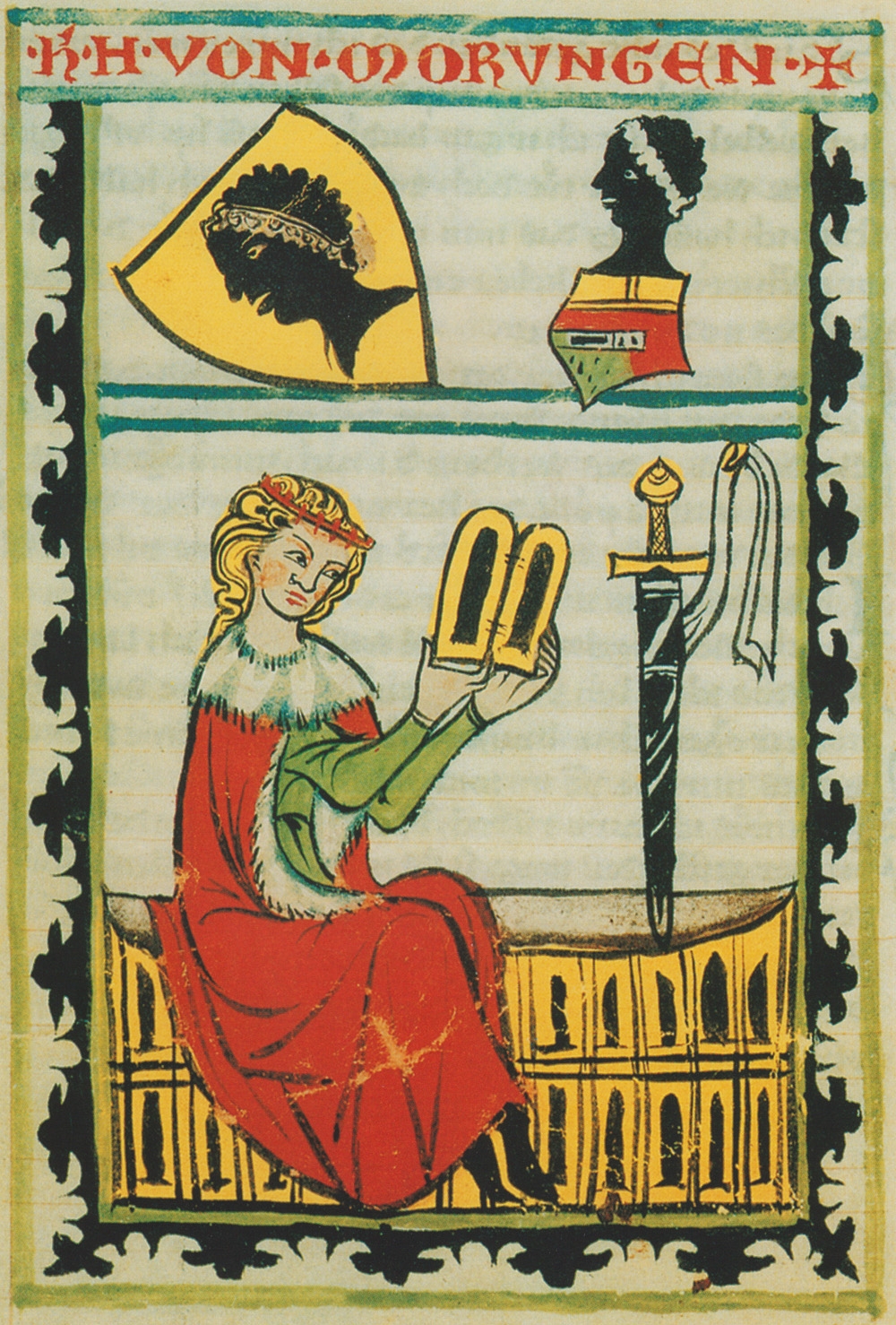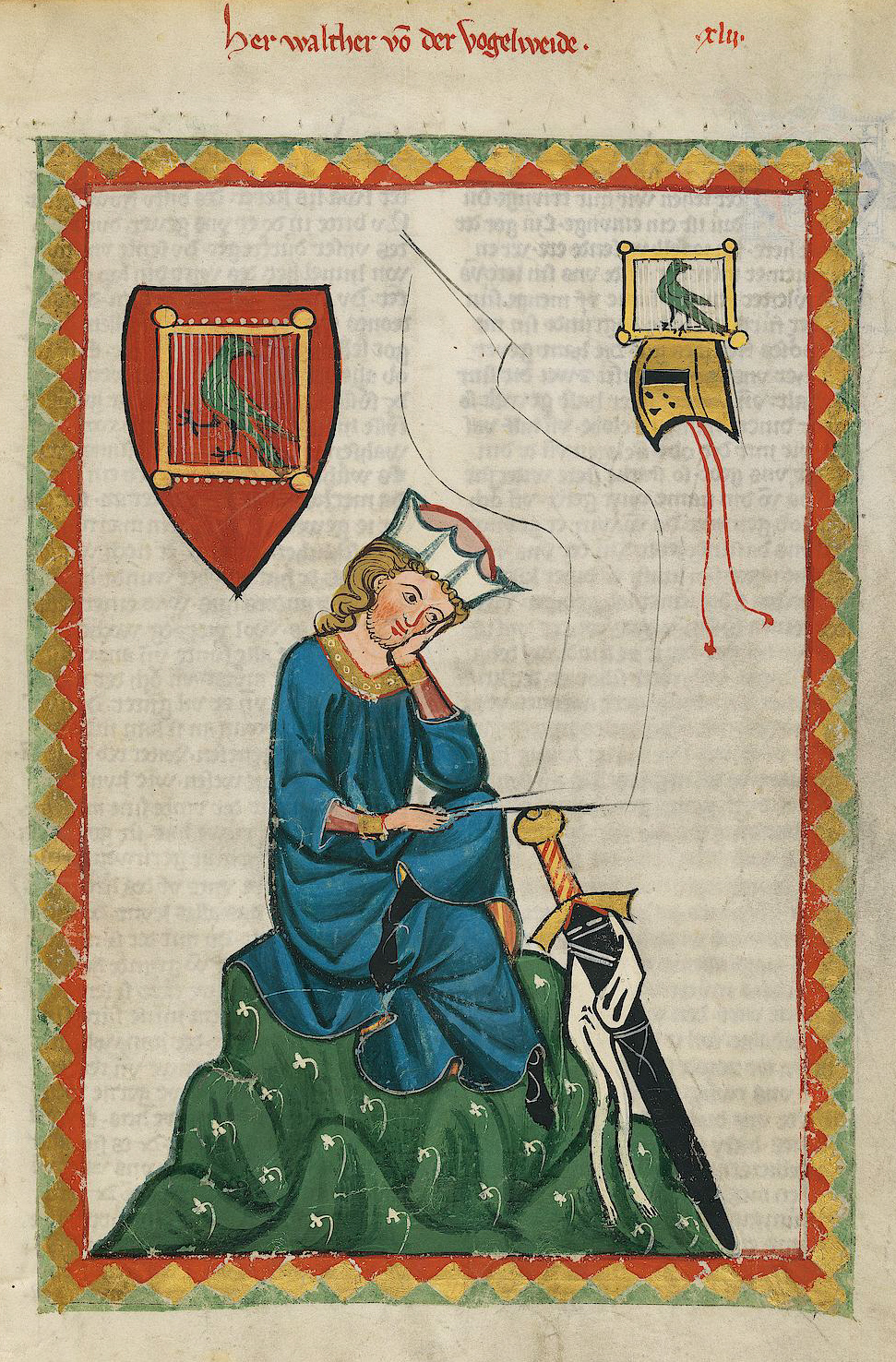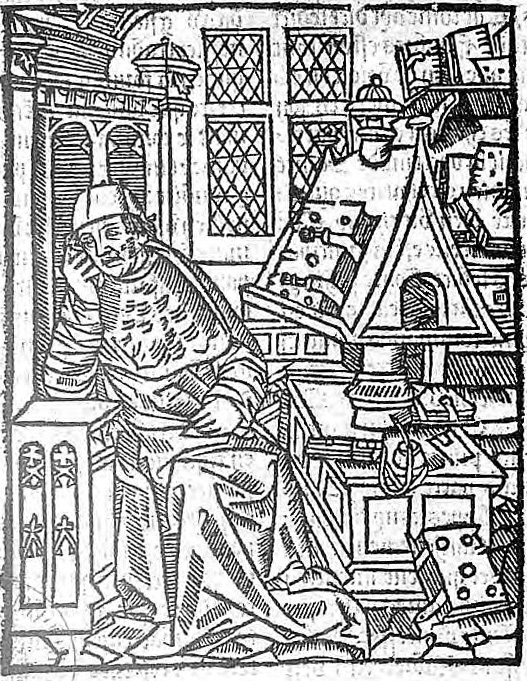 |
Bernger Von Horheim
Bernger von Horheim was a Rhenish Minnesänger of the late twelfth century. He wrote in the tradition of courtly love and was influenced by Friedrich von Hausen. Bernger may originate from Horrheim in Vaihingen an der Enz. Another possibility is Harheim near Frankfurt. A ''Berengerius de Orehem'' is recorded in Italy in 1196 with Philip of Swabia, probably participating in the campaign of Emperor Henry VI in Apulia. A ''Ritterklage'' in Bernger's fourth song may refer to this campaign. Six of Bernger's songs, seventeen stanzas in total, are recorded in the ''Codex Manesse''. Thirteen of these stanzas (all except songs V and VI) are also found in the ''Weingartner Liederhandschrift.'' His songs are predominantly '' Minneklagen'', though song II has been called a '' Lügenlied'' (lying song). In each of its four strophes Bernger sings of happiness and fulfilled love before ending with the claim that he was lying. This song type was later adopted by Tannhäuser and Der Marner. ... [...More Info...] [...Related Items...] OR: [Wikipedia] [Google] [Baidu] |
 |
Codex Manesse Bernger Von Horheim
The codex (plural codices ) was the historical ancestor of the modern book. Instead of being composed of sheets of paper, it used sheets of vellum, papyrus, or other materials. The term ''codex'' is often used for ancient manuscript books, with handwritten contents. A codex, much like the modern book, is bound by stacking the pages and securing one set of edges by a variety of methods over the centuries, yet in a form analogous to modern bookbinding. Modern books are divided into paperback or softback and those bound with stiff boards, called hardbacks. Elaborate historical bindings are called treasure bindings. At least in the Western world, the main alternative to the paged codex format for a long document was the continuous scroll, which was the dominant form of document in the ancient world. Some codices are continuously folded like a concertina, in particular the Maya codices and Aztec codices, which are actually long sheets of paper or animal skin folded into pages. The ... [...More Info...] [...Related Items...] OR: [Wikipedia] [Google] [Baidu] |
 |
Weingarten Manuscript
The Weingarten Manuscript (German ''Weingartner Liederhandschrift'') is a 14th-century illuminated manuscript containing a collection of Minnesang lyrics. It is currently in the Württembergische Landesbibliothek, Stuttgart, with the shelf-mark HB XIII 1. In Minnesang scholarship it is referred to as Manuscript B. Along with the Codex Manesse (MS. C) and the Kleine Heidelberger Liederhandschrift (MS. A) it is one of the major sources of Minnesang texts from the beginnings (around 1150) to the end of the "golden age" (around 1230). Description The manuscript comprises 158 folios and is 15cm×11.5cm in size, the small size suggesting that it was for private use. It contains collections of lyrics by 31 poets: 25 are named Minnesänger and the other six are not named, but the authors are identifiable from texts preserved in other MSS. The MS. contains miniatures of the 25 named Minnesänger, two half-page, the rest full-page. Most of the poems are love lyrics but among the anonymou ... [...More Info...] [...Related Items...] OR: [Wikipedia] [Google] [Baidu] |
 |
Minnesingers
(; "love song") was a tradition of lyric- and song-writing in Germany and Austria that flourished in the Middle High German period. This period of medieval German literature began in the 12th century and continued into the 14th. People who wrote and performed ''Minnesang'' were known as ''Minnesänger'' (), and a single song was called a ''Minnelied'' (). The name derives from '' minne'', the Middle High German word for love, as that was ''Minnesang'''s main subject. The ''Minnesänger'' were similar to the Provençal troubadours and northern French ''trouvères'' in that they wrote love poetry in the tradition of courtly love in the High Middle Ages. Social status In the absence of reliable biographical information, there has been debate about the social status of the ''Minnesänger''. Some clearly belonged to the higher nobility – the 14th century Codex Manesse includes songs by dukes, counts, kings, and the Emperor Henry VI. Some ''Minnesänger'', as indicated by the ... [...More Info...] [...Related Items...] OR: [Wikipedia] [Google] [Baidu] |
.jpg) |
Oxford University Press
Oxford University Press (OUP) is the university press of the University of Oxford. It is the largest university press in the world, and its printing history dates back to the 1480s. Having been officially granted the legal right to print books by decree in 1586, it is the second oldest university press after Cambridge University Press. It is a department of the University of Oxford and is governed by a group of 15 academics known as the Delegates of the Press, who are appointed by the vice-chancellor of the University of Oxford. The Delegates of the Press are led by the Secretary to the Delegates, who serves as OUP's chief executive and as its major representative on other university bodies. Oxford University Press has had a similar governance structure since the 17th century. The press is located on Walton Street, Oxford, opposite Somerville College, in the inner suburb of Jericho. For the last 500 years, OUP has primarily focused on the publication of pedagogical texts a ... [...More Info...] [...Related Items...] OR: [Wikipedia] [Google] [Baidu] |
|
Grove Music Online
''The New Grove Dictionary of Music and Musicians'' is an encyclopedic dictionary of music and musicians. Along with the German-language ''Die Musik in Geschichte und Gegenwart'', it is one of the largest reference works on the history and theory of music. Earlier editions were published under the titles ''A Dictionary of Music and Musicians'', and ''Grove's Dictionary of Music and Musicians''; the work has gone through several editions since the 19th century and is widely used. In recent years it has been made available as an electronic resource called ''Grove Music Online'', which is now an important part of ''Oxford Music Online''. ''A Dictionary of Music and Musicians'' ''A Dictionary of Music and Musicians'' was first published in London by Macmillan and Co. in four volumes (1879, 1880, 1883, 1889) edited by George Grove with an Appendix edited by J. A. Fuller Maitland in the fourth volume. An Index edited by Mrs. E. Wodehouse was issued as a separate volume in 1890. ... [...More Info...] [...Related Items...] OR: [Wikipedia] [Google] [Baidu] |
|
|
Matter Of Britain
The Matter of Britain is the body of medieval literature and legendary material associated with Great Britain and Brittany and the legendary kings and heroes associated with it, particularly King Arthur. It was one of the three great Western story cycles recalled repeatedly in medieval literature, together with the Matter of France, which concerned the legends of Charlemagne, and the Matter of Rome, which included material derived from or inspired by classical mythology. History The three "Matters" were first described in the 12th century by French poet Jean Bodel, whose epic ' ("Song of the Saxons") contains the line: The name distinguishes and relates the Matter of Britain from the mythological themes taken from classical antiquity, the " Matter of Rome", and the tales of the Paladins of Charlemagne and their wars with the Moors and Saracens, which constituted the "Matter of France". King Arthur is the chief subject of the Matter of Britain, along with stories rela ... [...More Info...] [...Related Items...] OR: [Wikipedia] [Google] [Baidu] |
|
 |
Tristan And Iseult
Tristan and Iseult, also known as Tristan and Isolde and other names, is a medieval chivalric romance told in numerous variations since the 12th century. Based on a Celtic legend and possibly other sources, the tale is a tragedy about the illicit love between the Cornish knight Tristan and the Irish princess Iseult. It depicts Tristan's mission to escort Iseult from Ireland to marry his uncle, King Mark of Cornwall. On the journey, Tristan and Iseult ingest a love potion, instigating a forbidden love affair between them. The story has had a lasting impact on Western culture. Its different versions exist in many European texts in various languages from the Middle Ages. The earliest instances take two primary forms: the courtly and common branches. The former begins with the 12th-century poems of Thomas of Britain and Béroul, while the latter reflects a now-lost original version. A subsequent version emerged in the 13th century in the wake of the greatly expanded Prose ... [...More Info...] [...Related Items...] OR: [Wikipedia] [Google] [Baidu] |
 |
Chrétien De Troyes
Chrétien de Troyes (Modern ; fro, Crestien de Troies ; 1160–1191) was a French poet and trouvère known for his writing on Arthurian subjects, and for first writing of Lancelot, Percival and the Holy Grail. Chrétien's works, including '' Erec and Enide'', '' Lancelot'', '' Perceval'' and '' Yvain'', represent some of the best-regarded of medieval literature. His use of structure, particularly in ''Yvain'', has been seen as a step towards the modern novel. Life Little is known of his life, but he seems to have been from Troyes or at least intimately connected with it. Between 1160 and 1172 he served (perhaps as herald-at-arms, as Gaston Paris speculated) at the court of his patroness Marie of France, Countess of Champagne, daughter of King Louis VII and Eleanor of Aquitaine, who married Count Henry I of Champagne in 1164. Later, he served the court of Philippe d'Alsace, Count of Flanders. Works Chrétien's works include five major poems in rhyming eight-syllable ... [...More Info...] [...Related Items...] OR: [Wikipedia] [Google] [Baidu] |
|
Der Marner
Der or DER may refer to: Places * Darkənd, Azerbaijan * Dearborn (Amtrak station) (station code), in Michigan, US * Der (Sumer), an ancient city located in modern-day Iraq * d'Entrecasteaux Ridge, an oceanic ridge in the south-west Pacific Ocean Science and technology * Derivative chromosome, a structurally rearranged chromosome * Distinguished Encoding Rules, a method for encoding a data object, including public key infrastructure certificates and keys * Distributed Energy Resources * ∂, the partial derivative symbol *Deep energy retrofit, an energy conservation measure Organizations * Digital Education Revolution, former Australian Government-funded educational reform program * DER rental (Domestic Electric Rentals Ltd), a UK television rentals company * Documentary Educational Resources, a non-profit film producer and distributor Other uses *Defence (Emergency) Regulations, legal regulations promulgated by the British in Mandatory Palestine in 1945 *Department of Env ... [...More Info...] [...Related Items...] OR: [Wikipedia] [Google] [Baidu] |
|
 |
Tannhäuser
Tannhäuser (; gmh, Tanhûser), often stylized, "The Tannhäuser," was a German Minnesinger and traveling poet. Historically, his biography, including the dates he lived, is obscure beyond the poetry, which suggests he lived between 1245 and 1265. His name becomes associated with a "fairy queen"-type folk ballad in German folklore of the 16th century. Historical Tannhäuser The most common tradition has him as a descent from the ''Tanhusen'' family of Imperial ''ministeriales'', documented in various 13th century sources, with their residence in the area of Neumarkt in the Bavarian Nordgau. These sources identify him as being descended of an Old Styrian noble family. The illustrated ''Codex Manesse'' manuscript (about 1300–1340) depicts him clad in the Teutonic Order habit, suggesting he might have fought in the Sixth Crusade led by Emperor Frederick II in 1228/29. For a while, Tannhäuser was an active courtier at the court of the Austrian duke Frederick the Warlike, ... [...More Info...] [...Related Items...] OR: [Wikipedia] [Google] [Baidu] |